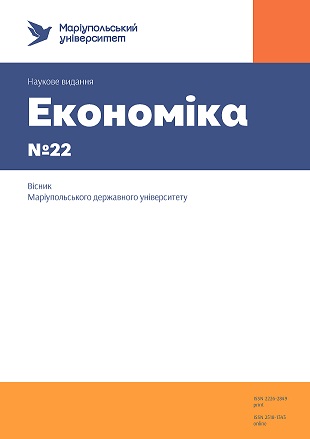

 | Наукова періодика України | 
| Вісник Маріупольського державного університету |
Звездова А. Б. Формирование единого экономического пространства в рамках ЕврАзЭс: внешнеторговые и экономические аспекты / А. Б. Звездова, В. В. Килин // Вісник Маріупольського державного університету. Сер. : Економіка. - 2014. - Вип. 7. - С. 31-42. - Режим доступу: http://nbuv.gov.ua/UJRN/Vmdu_ek_2014_7_6 В статье исследованы особенности развития региональной экономической интеграции в рамках Евразийского экономического сообщества. Проведен анализ динамики развития внешнеторговой деятельности государств-членов и стран-наблюдателей ЕврАзЭС. Рассмотрены основные изменения показателей внешней и взаимной торговли государств-участников Таможенного союза и Единого экономического пространства. Проанализированы объемы поступления таможенных платежей и результаты внешней торговли России. Отмечены риски, выгодыи преимущества евразийской интеграции. Выдвинуты предложения и рекомендации по совершенствованию торгово-экономического сотрудничества, разработке и реализации комплексных мер для создания Евразийского экономического союза.У статті досліджено особливості розвитку регіональної економічної інтеграції в рамках Євразійського економічного співтовариства. Проведено аналіз динаміки розвитку зовнішньоторговельної діяльності держав-членів та країн-спостерігачів ЄврАзЕС. Розглянуто основні зміни показників зовнішньої і взаємної торгівлі держав - учасників Митного союзу і Єдиного економічного простору. Проаналізовано обсяги надходження митних платежів та результати зовнішньої торгівлі Росії. Відмічені ризики, вигоди і переваги євзовнішньоторговельна діяльність, ЄврАзЕС, Єдиний економічний простір, інтеграція, СНД, митні платежі, Митний союз.The article discusses development of regional economic integration in the post-Soviet space with regard to the fact that the large-scale reforms after the collapse of the USSR caused serious structural transformations in the relations among the states. The experience accumulated by the Commonwealth of Independent States (CIS) allowed to launch a multilevel and multi-speed integration. The authors consider the stages, risks and perspectives of development of the regional economic integration. The process of Eurasian integration can be divided into three main stages. The first stage was the formation of the Eurasian Economic Community (EurAsEC) on 10 October 2000. The second stage was the formation of the Customs Union involving the Russian Federationthe Republic of Belarus and the Republic of Kazakhstan on 1 January 2010, which was transformed into the Common Economic Space on 1 January 2012. The third stage is planned to be reached in 2015, when the union of the next level will be formed - the Eurasian Economic Union. The international economic organization - the Eurasian Economic Community - has already demonstrated successful realization of its targets. It has finishedformation of the free trade mode, formation of the common customs tariff and the common system of non-tariff regulation measures, and provided coordination for the integration into the global economy and international trade system. The integration vector for long-term multilateral interaction of post-Soviet states was established. The foreign trade volume of the member and observer states of the Eurasian Economic Community, including the mutual gross commodity turnover with the member and observer states of the EurAsEC, has grown several-fold in 2011 in comparison to 2000. Formation of the Common Economic Space is the most significant event not only in the life of the EurAsEC, but the whole of the CIS. The essential condition for the efficiency of this integration union is progressive development of foreign trade and trade among member states of the Trading System and the Common Economic Space. The analysis carried out by the authors of this article has shown that in general in the period of 2010-2013 there was positive dynamics of development and stabilization of the foreign trade and trade among member states of the Trading System and the Common Economic Space, with certain exceptions. Under these conditions Russia has also managed to achieve positive dynamics of the foreign trade development in the last decade. The articlepoints out risks, benefits and advantages of Eurasian integration and draws relevant conclusions. Suppositions and recommendations are made on how to promote trade and economic cooperation, increase efficiency of foreign trade and realize measures for creation of the Eurasian Economic Union. Цитованість авторів публікації: Бібліографічний опис для цитування: Звездова А. Б. Формирование единого экономического пространства в рамках ЕврАзЭс: внешнеторговые и экономические аспекты / А. Б. Звездова, В. В. Килин // Вісник Маріупольського державного університету. Сер. : Економіка. - 2014. - Вип. 7. - С. 31-42. - Режим доступу: http://nbuv.gov.ua/UJRN/Vmdu_ek_2014_7_6. |
|
|
Всі права захищені © Національна бібліотека України імені В. І. Вернадського |
|||||